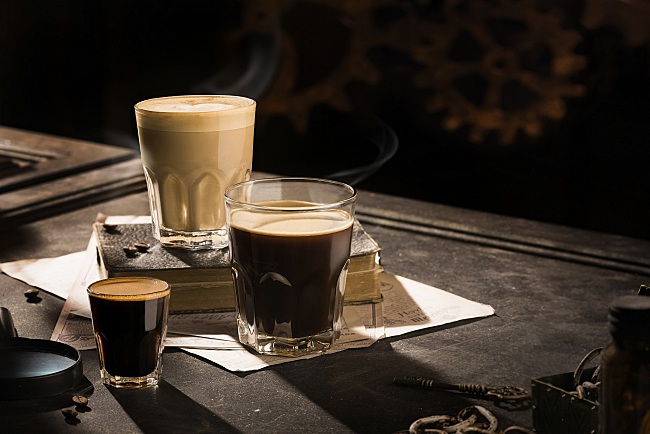A Starter’s Guide to Understanding SOE Single Origin Espresso
A Starter’s Guide to Understanding SOE Single Origin Espresso
Blog Article
Recognizing Coffee Beans: the Trip From Espresso to Blended Coffee Beans

The Beginnings of Coffee: A Worldwide Perspective
While you might assume of coffee as a contemporary staple, its beginnings trace back centuries, intertwining with societies across the world. The story starts in Ethiopia, where tale claims a goat herder called Kaldi discovered the stimulating impacts of coffee beans after seeing his goats romping vigorously after eating them.
As trade routes increased, coffee made its method to Europe in the 17th century, swiftly getting appeal. It changed from a mystical beverage into a day-to-day ritual, intellectual exchanges and motivating celebrations. Each culture added its one-of-a-kind spin to coffee prep work, enhancing its background. This global journey highlights exactly how coffee attaches us, transcending boundaries and unifying diverse practices via a simple bean.
Growing and Harvesting of Espresso Beans
As coffee's trip evolved, the emphasis changed to the farming and harvesting of details bean ranges, particularly those used for coffee. You'll discover that espresso beans commonly originate from Arabica or Robusta plants, each offering unique tastes. The optimal growing problems include high altitudes and abundant, well-drained soil, which enhance the beans' top quality.
During the harvest, selecting methods differ. Timing is crucial; you desire to gather when the cherries reach peak perfection for optimum taste.
As soon as gathered, the beans are prepared for processing, which is vital in determining their last preference. Recognizing the cultivation and gathering procedures gives you understanding right into what goes into your preferred coffee, enhancing your appreciation for each and every cup.
Processing Approaches: From Cherry to Bean
Now that you've learnt more about gathering espresso beans, allow's explore exactly how those cherries transform into the coffee beans you enjoy. You'll see just how different harvesting methods impact flavor, complied with by the important steps of fermentation and drying. Lastly, we'll break down the milling and grading procedure that establishes your coffee's quality.
Gathering Techniques Explained
When it comes to coffee, recognizing harvesting methods is important, considering that they directly impact the taste and high quality of the beans you appreciate. Selective selecting entails hand-picking just ripe cherries, ensuring you obtain the ideal high quality beans. Ultimately, the choice of gathering technique can considerably influence your coffee experience, so it's worth understanding how those beans made it to your mug.
Fermentation and Drying
After collecting, the following action in processing coffee beans play a substantial duty fit their taste. You'll locate that fermentation is important, as it assists break down the mucilage surrounding the beans, improving their taste account. Relying on the approach, this process can last from a couple of hours to a number of days, with varying outcomes based upon temperature and moisture.
Once fermentation is total, drying out complies with, which is equally crucial. You can select from sun-drying or mechanical drying out approaches. Sun-drying enables the beans to absorb tastes from the setting, while mechanical drying out warranties regular wetness degrees regardless of climate. Correct drying is important to protect against mold and preserve the beans' top quality, inevitably influencing your cup of coffee.
Milling and Grading Refine
As fermentation and drying out established the stage for taste development, the milling and grading process warranties that only the best coffee beans make it to your mug. This stage involves removing the outer layers of the coffee cherry, including the parchment and husk. Premium beans receive a greater quality, resulting in a richer coffee experience.
Toasting Techniques: Opening Flavor Prospective
When you roast coffee beans, the technique you pick can dramatically affect the flavor profile. Recognizing the partnership in between time, temperature, and toasting techniques is essential to disclosing the capacity of your brew. Allow's discover how these aspects come with each other to develop the ideal mug.
Roasting Methods Explained
While you may believe that all coffee toasting methods produce the exact same results, the fact is that each method exposes special taste possibilities in the beans. You can pick in between techniques like drum toasting, air roasting, or also standard frying pan roasting. Drum toasting uses a revolving drum to evenly disperse heat, improving caramelization and producing a balanced flavor. Air roasting, on the various other hand, circulates warm air around the beans, advertising a lighter roast with obvious acidity. Pan toasting enables hands-on control but calls for consistent attention to stay clear of burning. Each method has its subtleties, so experimenting with various techniques can assist you uncover the best roast that straightens with your preference preferences. Appreciate the trip of finding your suitable mug!

Influence On Flavor Account
Various roasting approaches not only affect the procedure however also greatly affect the taste account of the coffee beans. When you choose a light roast, you'll experience intense level of acidity and flower notes, showcasing the bean's origin. In comparison, a medium roast equilibriums level of acidity with sweet taste, often disclosing chocolatey touches. Dark roasts, on the various other hand, bring out vibrant, smoky flavors, occasionally concealing the bean's special qualities. Each method exposes different oils and substances, bring about a variety of tastes. By trying out numerous toasting designs, you can find which accounts resonate with your taste. Comprehending these subtleties assists you appreciate the creativity behind your mug of coffee, improving your general experience with every sip.
Time and Temperature Variables
To release the full taste capacity of coffee beans, both time and temperature throughout the toasting procedure play substantial duties. When toasting, you'll find that higher temperature levels can promptly develop tastes, however if you rush it, you could end up with charred notes. Conversely, lower temperature levels enable for a more gradual flavor development, showcasing the beans' special features.

Timing is simply as essential; prolonging the roast also long can bring about a loss of level of acidity and brightness, while as well brief a roast may leave the beans underdeveloped. Locating that wonderful place requires method and experimentation. By changing these aspects, you can expose the abundant, complicated flavors concealed within each bean, creating an absolutely remarkable coffee experience.
The Art of Mixing: Crafting Unique Coffee Accounts

Beginning by choosing a base coffee that gives a solid foundation. An intense Ethiopian bean can bring fruitiness, while an abundant Brazilian coffee adds body.
As you blend, remember that each combination narrates. You're not just making coffee; you're producing an experience. Take your time, taste regularly, and delight in the trip of finding your trademark mix - Single Origin Espresso.
Brewing Methods: How Preparation Impacts Flavor
Blending coffee opens up a domain name of flavor opportunities, but how you brew that blend can significantly affect your final cup. On the various other hand, a pour-over highlights the coffee's clearness and brightness, perfect for showcasing fragile notes.
Coffee, with its high pressure, generates a focused shot that highlights sweet taste and crema. If you like a lighter mixture, consider a cold brew method; it generates a smooth, much less acidic preference.
Adjusting variables like water temperature, grind dimension, and brew time can change your coffee's account. Embrace the art of brewing to discover the tastes concealed in your coffee blends.
The Future of Coffee: Sustainability and Development
As the coffee sector progresses, sustainability and technology are coming to be necessary for attending to environmental difficulties and meeting consumer needs. You'll see that more coffee companies are adopting environment-friendly techniques, from sourcing beans ethically to implementing sustainable farming strategies. These shifts not just aid the earth however also improve the top quality of the coffee you enjoy.
You might see advancements like biodegradable packaging and water-saving brewing techniques that reduce waste. Advanced technology, such as blockchain, is likewise coming to be popular, making certain openness in the supply chain, which allows you to map your coffee back to its beginnings.
Furthermore, purchasing Home Page neighborhood areas and supporting farmers via fair trade initiatives fosters a much more lasting coffee ecosystem. As you sip your following cup, bear in mind that your choices can add to a brighter future for coffee. By choosing sustainable brands, you're not just enjoying a beverage; you're making a favorable effect on the world.
Frequently Asked Inquiries
What Is the Difference In Between Arabica and Robusta Beans?
Arabica beans are smoother, sweeter, and have a greater acidity, while robusta beans are more powerful, more bitter, and contain even more high levels of caffeine. You'll see these distinctions in flavor and scent when making your coffee.
Just How Does Elevation Affect Coffee Bean Flavor?
Altitude impacts coffee bean flavor considerably. Greater altitudes generate beans with brighter level of acidity and facility tastes, while lower elevations often produce beans that are larger and much less nuanced. You'll discover these differences in your mug!
What Are the Health Conveniences of Alcohol Consumption Coffee?
Consuming coffee can increase your energy, improve psychological emphasis, and also boost physical performance. It's abundant in anti-oxidants, might decrease the risk of certain illness, and can advertise a much healthier metabolic rate when eaten in moderation.
Can Coffee Beans Be Reused for Developing?
Yes, you can reuse coffee beans for developing, but the flavor may be weak. If you appreciate trying out, try recycling them in various methods, like cold mixtures or including to healthy smoothies for an extra kick.
How Should I Shop Coffee Beans for Quality?
To keep your coffee beans fresh, store them in an airtight container in a great, dark place. Prevent revealing them to warm, light, or Click Here wetness, as these variables can rapidly weaken their taste and scent.
Comprehending Coffee Beans: the Journey From Espresso to Blended Coffee Beans.
Currently that you have actually learned regarding gathering coffee beans, let's check out how those cherries change into the coffee beans you love.When you roast coffee beans, the technique you pick can considerably impact the taste profile - Single Origin Espresso.While you might assume that all coffee toasting approaches generate the very same results, the truth is that each strategy exposes unique taste potentials in the beans.Various roasting approaches not just affect the procedure yet also substantially affect the flavor account of the coffee beans
Report this page